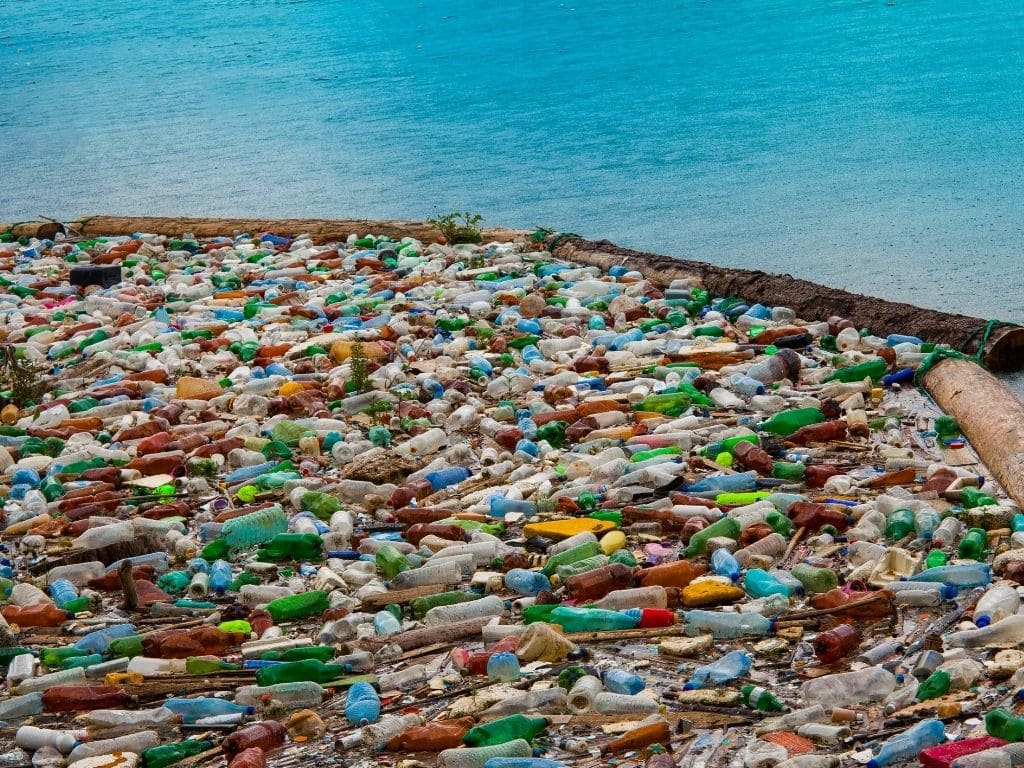Great Plastic Island: Understanding The Impact Of Ocean Plastic Pollution
Great Plastic Island is not just a metaphorical term; it represents a significant environmental crisis that has captured global attention. As we navigate through the 21st century, the alarming accumulation of plastic waste in our oceans has transformed into a formidable challenge affecting marine life, ecosystems, and human health. In this article, we will delve deep into the phenomenon known as the Great Plastic Island, exploring its origins, implications, and potential solutions.
Plastic pollution is a pressing issue, with millions of tons of plastic waste entering our oceans every year. The Great Pacific Garbage Patch, often referred to as the Great Plastic Island, is one of the most notorious manifestations of this crisis. It serves as a stark reminder of humanity's impact on the environment and the urgent need for sustainable practices. By understanding the extent and effects of this problem, we can take actionable steps toward a cleaner, healthier planet.
This article aims to provide comprehensive insights into the Great Plastic Island phenomenon, backed by credible sources and expert opinions. We will explore its formation, the various types of plastics involved, the effects on marine life, and what can be done to mitigate this crisis. Join us on this journey to uncover the truth behind the Great Plastic Island and how we can contribute to its resolution.
Table of Contents
- Introduction
- What is the Great Plastic Island?
- Formation of the Great Plastic Island
- Types of Plastic in the Ocean
- Impact on Marine Life
- Human Health Risks
- Solutions and Preventive Measures
- Conclusion
What is the Great Plastic Island?
The term "Great Plastic Island" typically refers to the Great Pacific Garbage Patch, a massive area in the North Pacific Ocean where a high concentration of plastic debris has accumulated. This area is not a solid island but rather a vast expanse of floating plastic particles, some of which are microscopic. The patch is estimated to be twice the size of Texas, making it the largest accumulation of ocean plastic in the world.
Scientists have identified several regions within the Great Pacific Garbage Patch, with the Western Garbage Patch and Eastern Garbage Patch being the most studied. The accumulation of plastic is primarily caused by ocean currents that trap debris in these areas, leading to an environment where plastic can persist for decades.
Formation of the Great Plastic Island
The formation of the Great Plastic Island is largely attributed to human activities and poor waste management practices. Here are some key factors contributing to its formation:
- Plastic Production: Since the 1950s, plastic production has skyrocketed, leading to an increase in plastic waste.
- Improper Disposal: A significant portion of plastic waste is not disposed of correctly, often ending up in rivers and oceans.
- Ocean Currents: Ocean currents play a critical role in gathering plastic debris into concentrated areas, creating patches like the Great Pacific Garbage Patch.
Types of Plastic in the Ocean
The Great Plastic Island is composed of various types of plastics, each with its own properties and environmental impact. The most common types include:
- Polyethylene (PE): Found in plastic bags and bottles, this is the most prevalent plastic in the ocean.
- Polypropylene (PP): Commonly used in packaging, this plastic is resistant to degradation.
- Polystyrene (PS): Often used for food containers and packaging, it breaks down into small particles known as microplastics.
- Polyethylene Terephthalate (PET): Widely used in beverage containers, PET is another major contributor to ocean plastic pollution.
Impact on Marine Life
The effects of plastic pollution on marine life are dire and far-reaching. Some of the most significant impacts include:
- Ingestion: Many marine animals mistake plastic debris for food, leading to ingestion that can cause internal injuries, starvation, or death.
- Entanglement: Animals can become entangled in larger pieces of plastic, leading to injury or drowning.
- Microplastics: These tiny plastic particles are ingested by smaller marine organisms, which can then enter the food chain, affecting larger predators, including humans.
Human Health Risks
While the Great Plastic Island primarily impacts marine ecosystems, there are significant risks associated with human health as well:
- Food Safety: Microplastics have been found in seafood, raising concerns about their impact on human health when consumed.
- Chemical Exposure: Plastics can leach harmful chemicals into the ocean, which can accumulate in marine life and pose health risks to humans.
Solutions and Preventive Measures
Addressing the issue of the Great Plastic Island requires a multifaceted approach. Here are some potential solutions:
- Reduce Plastic Production: Encouraging companies to minimize plastic use and switch to sustainable materials.
- Improve Waste Management: Implementing better waste management practices to prevent plastic waste from entering the ocean.
- Public Awareness: Raising public awareness about the effects of plastic pollution and promoting recycling and responsible disposal.
- Cleanup Initiatives: Supporting organizations and initiatives that focus on cleaning up existing plastic waste in the oceans.
Conclusion
The Great Plastic Island is a manifestation of our growing plastic pollution crisis, with significant implications for marine life and human health. By understanding its formation, the types of plastics involved, and the solutions available, we can take meaningful steps toward mitigating this environmental disaster. It is crucial for individuals, communities, and governments to work together to reduce plastic waste and protect our oceans.
We encourage you to share your thoughts in the comments below, and feel free to share this article to raise awareness about the Great Plastic Island. Together, we can make a difference for our planet!
Copa America Disaster: An In-Depth Analysis Of The Unforgettable Moments
Scores Last Night NBA: A Comprehensive Overview Of Recent Games
NFL Scores: A Comprehensive Guide To Understanding The Game Results

